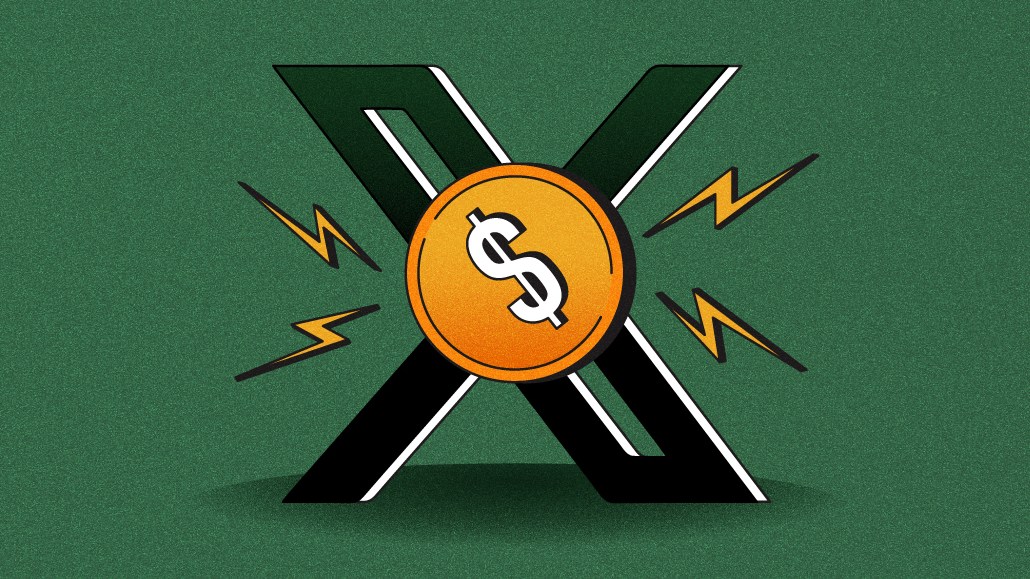Advertising on X right now might not be all bad – for some

Here’s a twist: Advertising on X might be lucrative for a certain type of marketer, provided they can overlook the deluge of hate speech, misinformation and violent content rampant on the platform. It’s a bargain bin for ad space at the cost of compromising principles.
Thanks to Elon Musk’s battle with major advertisers, less of them are advertising on the platform. Less competition for ad inventory means lower prices, but at the cost of associating with a platform facing ethical challenges. This is why four advertisers who Digiday caught up with haven’t shied away from the platform, at least not yet.
One U.K.-based advertiser, who wanted to remain anonymous said some of the brands they have been talking to recently have been discussing how they can play in those spaces (meaning X), where there is cheap inventory now.
Previously, X’s CPMs hovered around $3 – $5, but since Musk took over, they typically sit at around $1 – $2, according to three ad buyers interviewed for this story.
“Everyone is leaving, none of the big tier brands want to be there. But there is an audience for this,” said the marketer. “Is there a competitive advantage to being on those platforms when all of your competitors don’t want to be?”
Robert Brill, CEO of Brill Media, certainly seems to think so. As he pointed out, Musk’s recent response to advertisers hasn’t deterred his clients from spending because they are “looking for performance and growth”, although he is now considering whether it’s still a good idea to recommend it — the idea being that mud sticks and being guilty by association. Having said that, for now, while the platform isn’t a big driver of attributable conversions, Brill said it still plays a part in the media mix.
He said that CPMs he sees on X are typically $6.50 for website and traffic ads, and $0.16 for video ads to the U.S. with broad targeting. Brill, however, did caveat that X’s percentage of the social media mix varies. Sometimes it can take up to 12% but currently it accounts for 3% – 4% of his team’s social ad spend.
It’s like that famous Warren Buffet saying: “’Be greedy when others are fearful.”
Babar Khan, the chief communications officer at Z2C Limited, is witnessing this firsthand with his clients, who spend roughly between 10% – 15% of their social media mix on X. He expanded on the point: “My clients are marketers and their job is to generate a return on advertising spend. They are not paid to be activists. They are held accountable for missing sales targets.”
Khan said he sees X’s CPMs range between $1.46 to $3.15 for promoted posts to audiences in Pakistan, while campaigns directed at the U.S. and U.K. markets tend to see prices increase four or five times — primarily because their audiences there are relatively not as in demand, resulting in comparatively lower advertising costs or CPMs.
It’s crystal clear: These businesses prioritize performance over brand concerns. They spot an audience on X that they want to tap into, even if it means embracing the associated risks. The unpleasant content — slurs, racism, and conspiracy theories — on the social network isn’t exactly a deal-breaker for these marketers. Instead, they see it as an inconvenience to sidestep through more precise targeting and brand safety controls. As much as X needs the support these days, it also needs a miracle. Ad dollars from these opportunistic advertisers won’t fill the void left by the larger ones departing from X.
Ad revenue figures that have been tracked by Guideline showed that when comparing ad spend between January to October in 2023 vs. 2022, X’s revenue has shrunk by 64%. Which makes sense, given that the top 10 advertisers this year have reduced their spend between 70% – 97% overall, per data from MediaRadar. For example, AT&T reduced their spend by 97%, The Coca-Cola Company decreased theirs by 96%, while Bank of America Corporation reduced theirs by 70%.
These decreases aren’t a recent thing. No, they’re the result of a year-long farewell party for advertisers bidding adieu to X.
One agency holding group, for example, said that there has been roughly a 38% drop in X investment year on year, with an added audience decline of 17% when comparing September 2023 with September 2022.
X did not respond to Digiday’s request for comment.
More in Marketing

Pitch deck: How Amazon is recasting Twitch as a core part of its CTV pitch
Amazon is positioning Twitch as a defining asset in its CTV ambitions.

Netflix transforms former mall department stores into experiential venues
The location in Dallas opens this week, and one at the King of Prussia mall near Philadelphia opened last month.

Future of Marketing Briefing: AI has created a new talent paradox in programmatic agencies
The job isn’t execution anymore. AI handles that. The job is judgement.







